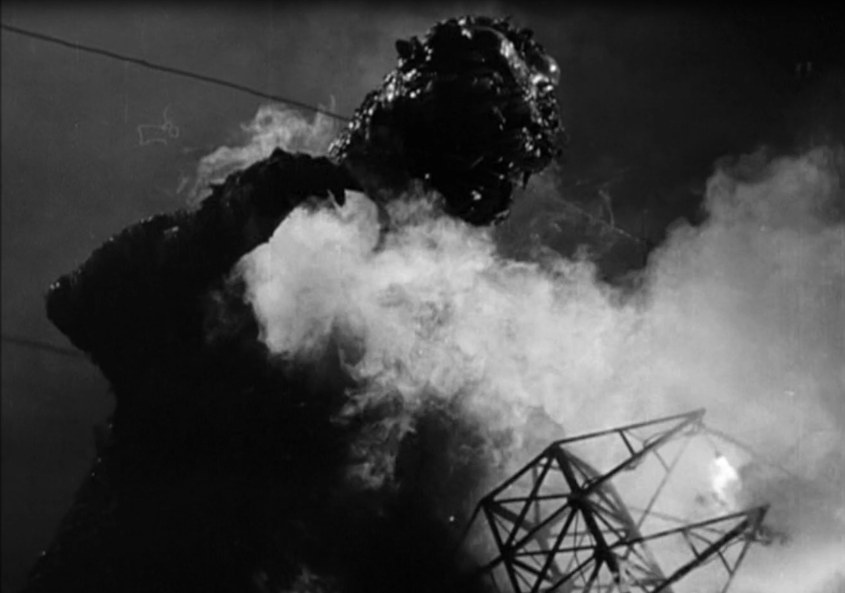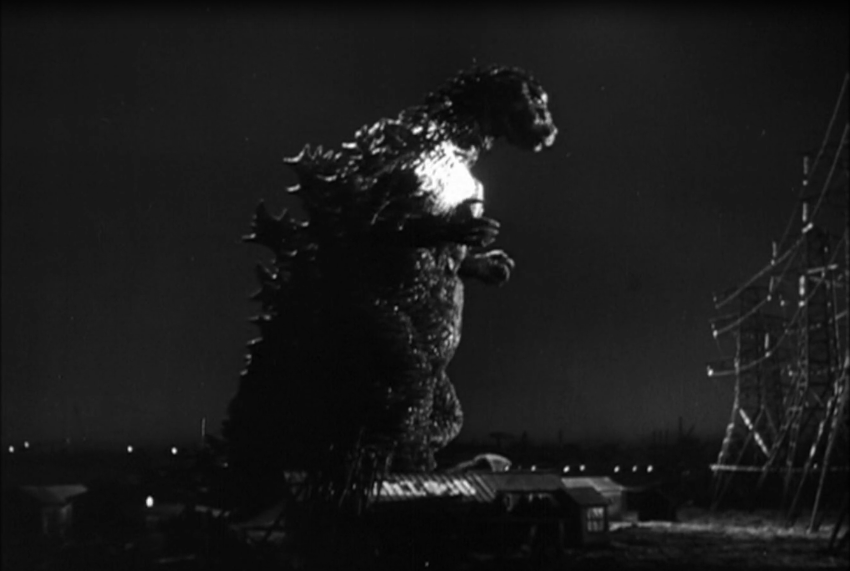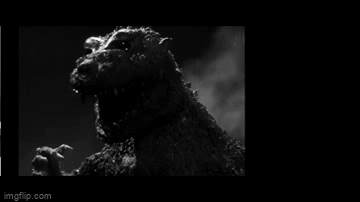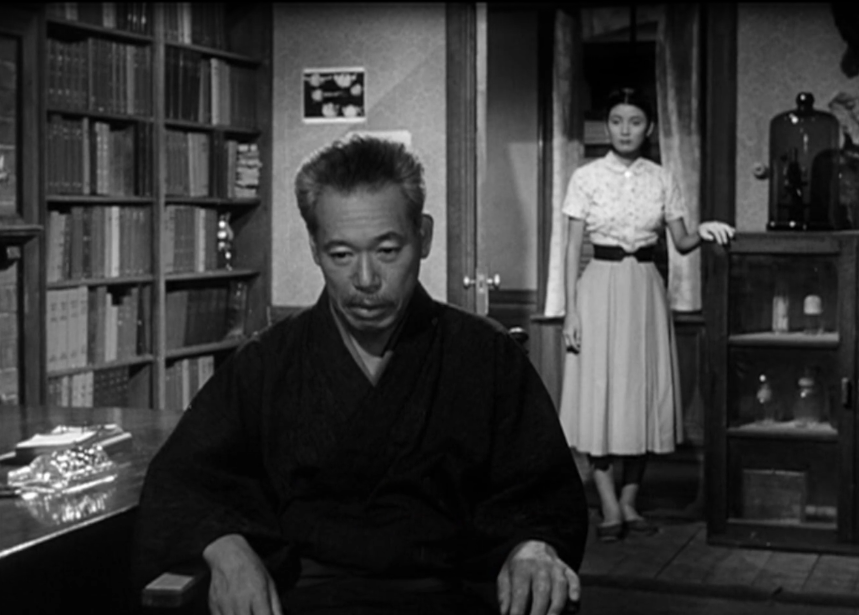 With over 30 films over 6 decades. Godzilla remains an icon of the monster movie genre. He was far from the first but he has remained a constant fixture of the genre throughout 20th & 21st century..
With over 30 films over 6 decades. Godzilla remains an icon of the monster movie genre. He was far from the first but he has remained a constant fixture of the genre throughout 20th & 21st century..Monster movies sure have come a long way, have they not? We have cinematic monsters ranging from the 8th wonder of the world King Kong, all the way to a killer tomato. But today we’re going to be talking about one of cinema’s most iconic monsters, the king of the monsters himself, Godzilla or Gojira depending on your persuasion. With over 30 films spread out over the course of 65+ years, the Toho produced monster has taken on a variety of tones throughout his filmography. But all franchises have started somewhere. This is 1954’s “Godzilla.”
Released in 1954 by the film company Toho, written and directed by Ishiro Honda, with musical score by Akira Ifukube, the plot is as follows: Following a series of nuclear tests, many boats had gone missing in the Japanese sea. This was not as a result of the tests but was due to the titular monster himself. Godzilla embarks on a rampage with only one goal: The destruction of Japan, and he won’t stop until he achieves that goal.
To this day, the film remains a bold commentary on the use of nuclear arms, presented by a country that experienced their power firsthand. Godzilla would go on to be the main character in many films over the years, each with a different tone. This particular film presents itself as very serious with the events playing out more like a horror movie than anything else. The film does not at all shy away from dark imagery, but some of the most horrific moments ended up being cut in the American re-dub titled “King of the Monsters.”
Godzilla was a critical and financial success, bringing in 2.2 million USD against a 1.5 million production budget, while the American re-cut brought in an additional 2 million USD during its theatrical runs. On the topic of special effects, although a man in a rubber suit being used to depict a monster might seem a touch ridiculous, this technique was rather unique at the time. In filmmaking at that time, many movie monsters were actually manipulated puppets or clay- created stop-motion imagery. In most shots, Godzilla is a man in a rubber suit, the exceptions being for closeups of his upper body. And this concept was truly groundbreaking for its time.

This film itself was quite a financial risk for Toho as it was the most expensively produced Japanese film at the time. In fact, if this film had failed financially the company responsible would have gone bankrupt, but “Godzilla” and 1954’s “Seven Samurai” saved the day. Following its success, a sequel was rushed into production and an American version was quickly produced for release in 1956. The American version, “King of the Monsters” starred Raymond Burr of “Perry Mason” and “Ironside” fame. Burr played a journalist reporting on Godzilla’s attack. This version includes 20 minutes of new English footage, whilst also cutting 40 minutes of original footage. Naturally this resulted in some plot points playing out somewhat differently.
Despite these cuts the American version was a financial and critical success. After watching both versions back-to-back, the American cut feels like a watered-down version of the original for the sake of making it more accessible. There is a lot of nuance present in the original that is missing in the recut. Much of the film is Burr narrating what the editing team feels is important, whilst cutting out what it deems unimportant. While this film has high production value for its era, there are some rough cuts during the runtime. When the camera focuses on the Godzilla suit it looks fine, however the same cannot be said for the upper body closeups of the puppet. Similarly, there are shots featuring automobile miniatures that look rough and awkward when compared to the shots of real automobiles in the same film.

Godzilla films would take on a variety of tones and quality in subsequent releases. But the original film knows what tone it wants to be, and what story it wants to tell. The director, Ishiro Honda a veteran of World War II, had already established himself with films such as “The Blue Pearl” and “Eagle of the Pacific.” The Godzilla franchise would go on to be famous for monster vs. monster action, but the original film has a bit more substance. If you wish to see a spectacle with a giant monster tearing through a city, you will be a tad disappointed. But if you wish to see a film with mature themes, a powerful message, and a tale symbolizing the potential horrors of nuclear arms that just happens to feature a giant monster, then you will be in for a treat.

I recommend this film to both fans of the monster genre and those interested in seeing a pivotal film showing that monster movies can be more than mindless spectacles of destruction.
